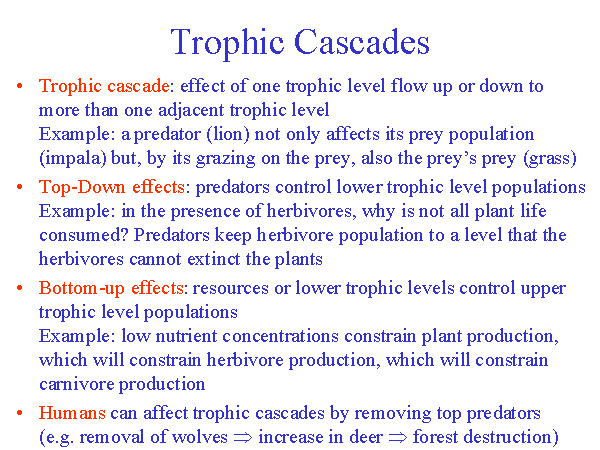
Trophic cascades occur when predators in a food web suppress the abundance and/or alter traits (e.g., behavior) of their prey, thereby releasing the next lower trophic level from predation (or herbivory if the intermediate trophic level is an herbivore). For example, if the abundance of large piscivorous fish is increased in a lake, the abundance of their prey, zooplanktivorous fish, should decrease, large zooplankton abundance should increase, and phytoplankton biomass should decrease.
This theory has stimulated new research in many areas of ecology. Trophic cascades may also be important for understanding the effects of removing top predators from food webs, as humans have done in many places through hunting and fishing activities.
A Top Down Cascade is a trophic cascade where the food chain or food web is disrupted by the removal of a top predator, or a third or fourth level consumer. On the other hand, a bottom up cascade occurs when a primary producer, or primary consumer is removed, and there is a diminishing of population size through the community.
An example could include Paine's study from the University of Washington, where he removed several species in different plots along the North-Western United States coast line, and realized that Pisaster, a common starfish, when removed, created a top-down cascade which involved a surge in barnacle and mussel population, but a decrease in the populations of chitons, limpets, and whelks. This led to the conclusion that Pisaster was a keystone species in that food web (Wikipedia).

You can make a difference


No comments:
Post a Comment